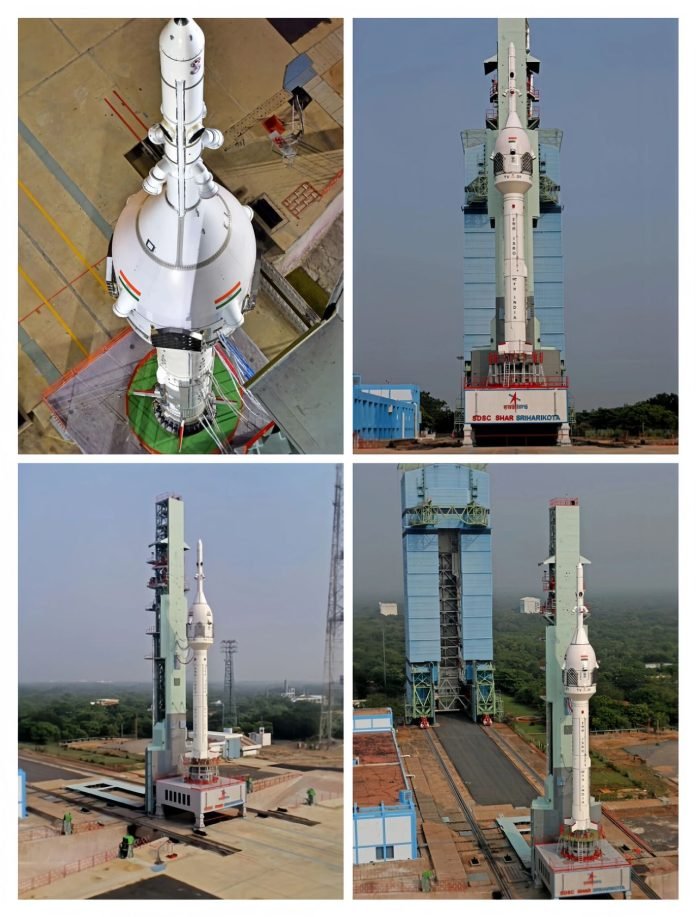The Indian Space Research Organisation (ISRO) successfully completed a crucial unmanned test flight as part of its first human spaceflight mission, Gaganyaan, marking an incredible milestone for India’s ambitious space programme The successful execution of this test mission is an important step in India’s journey to launch humans into space, making it the fourth nation in the world to accomplish this extraordinary feat, joining the United States, Russia, and China.
On a historic Saturday, 21st October 2023, ISRO launched an unmanned test flight from Sriharikota, marking the start of the Gaganyaan mission’s first major test. The purpose of the mission was to assess the effectiveness of the vehicle’s crew escape mechanism, which is a key component that ensures astronaut safety in the event of an emergency. According to a report from India TV News, ISRO’s Chief S Somanath said the following in a press conference: “The Crew Module has been fully recovered from the sea. There has been no anomaly. All data looks very good. A series of missions-20 tests have to be done. Today’s test was for the crew escape system.” The emergency escape system of the rocket successfully split from the crew module and accomplished a soft sea landing after 8.8 minutes.
The crew module, which is critical in protecting astronauts during emergencies, was safely retrieved by the Indian Navy. This module, part of a human spaceflight mission scheduled for 2025, landed in the Bay of Bengal. This successful emergency escape system test represents a huge accomplishment for ISRO and its Gaganyaan mission.
The initial launch of the uncrewed test flight, known as the TV-D1 Flight Test, was temporarily halted at roughly 8:45 a.m. due to an issue with the engine ignition. However, ISRO, known for its resilience and precision, quickly found and fixed the problems. The second launch attempt was scheduled for 10:00 a.m., and it proceeded without any further hiccups.
The objectives of the TV-D1 launch included: • Flight evaluation and demonstration of Test Vehicle subsystems. • Flight testing and evaluation of the Crew Escape System (CES), which includes several separation systems. • Evaluation of crew module features. • Testing of the deceleration system at higher altitudes and successful recovery.
This mission’s Test Vehicle was a single-stage liquid rocket constructed specifically for the abort mission. It carried components such as the Crew Module (CM) and Crew Escape Systems (CES), both of which used fast-acting solid motors, as well as the CM fairing (CMF) and Interface Adapters. The purpose of this flight was to replicate an abort condition during the ascent trajectory, which corresponded to a Mach number of 1.2, as expected in the Gaganyaan mission.
The Gaganyaan Mission: ISRO’s significant goal for the Gaganyaan mission is to launch three humans into an orbit 400 kilometres above Earth’s surface for a three-day trip and then safely return them to Earth. This mission represents a significant step forward in India’s space exploration efforts and highlights the country’s commitment to strengthening its space technological capabilities.
The Big Picture: India has set ambitious targets for the future, building on the success of this test flight and other successful space endeavours. According to an article on India Today, Prime Minister Narendra Modi, in a high-level meeting, has asked the Indian Space Research Organisation (ISRO) to work towards creating the ‘Bharatiya Antariksha Station’ (Indian Space Station) by 2035 and sending the first Indian to the Moon by 2040. This statement is coming just a few weeks after the successful and historic landing of Chandrayaan 3 on the moon. Sources: India TV News, Times of India, Live Mint By: Ashbiha Fathima
